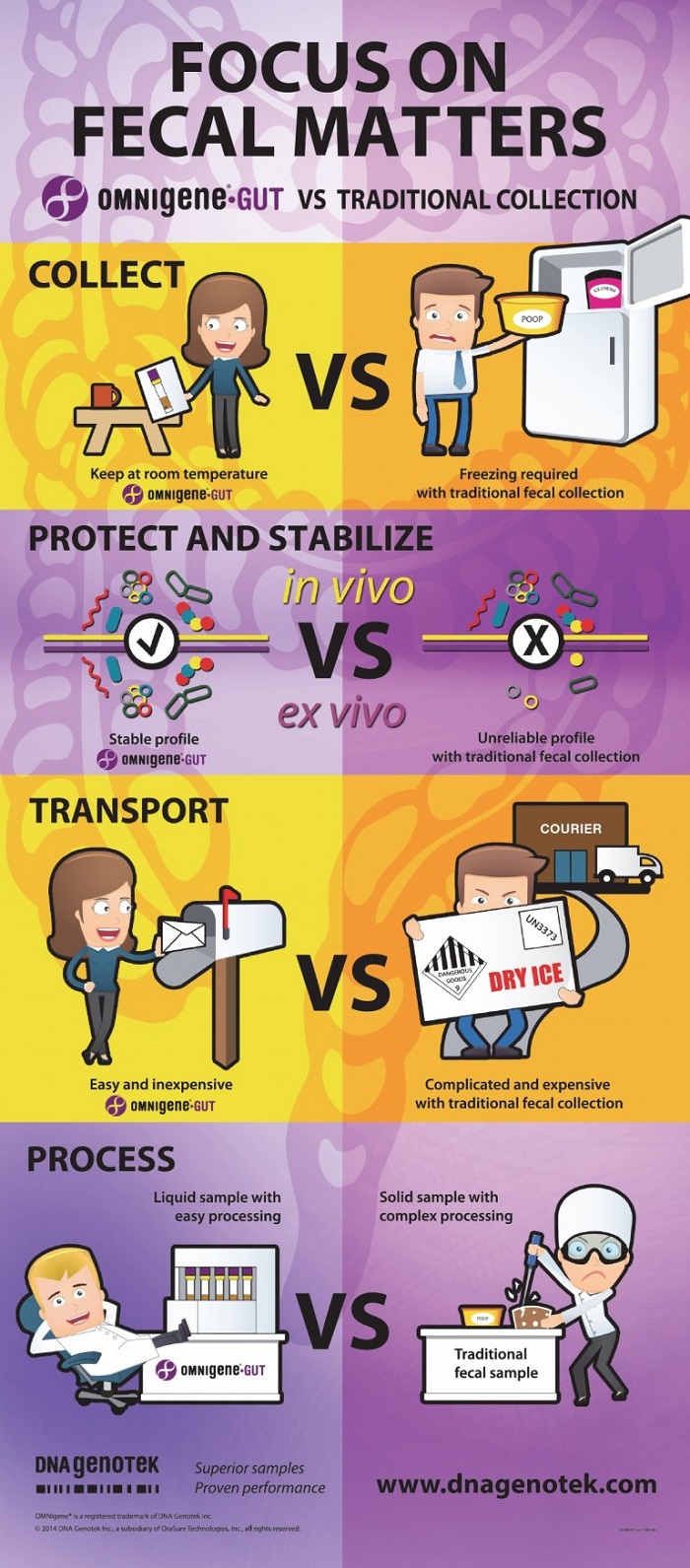How To Stabilize Samples For Intestinal Microbiome Study
Every day there are more studies that show that changes in the composition of our microbiome directly affect the development of various diseases. That is why the study of the microbiome undoubtedly opens a new horizon to explore in their therapeutic approach.
One of the most interesting microbiomes, and consequently one of the most active foci today, is the study of the human gut microbiome . The alteration of the microbial community that inhabits our gastrointestinal tract has been shown to be correlated with the development of diseases and disorders such as ulcerative colitis, Crohn’s disease, celiac disease, diabetes, obesity, and even colon cancer. Hence the importance of the composition of the intestinal microbiota.
Those responsible for many of these studies (especially multicenter ones and / or those that require the recruitment of a large number of patients) agree on what is one of the greatest handicaps when recruiting participants: managing to stabilize the stool samples that cannot be processed immediately.
As far as possible, an attempt has been made to solve this problem by refrigerating them for the first few hours (with the objection that this may entail for the patient who has to put it in the refrigerator at home along with the chicken breasts or yogurts of their children), and / or freezing them until processing (with the consequent increase in shipping costs at controlled temperature and storage).
But Why Freeze The Sample If You Can Keep It Stable At Room Temperature?
A new kit, the OMNIgene ● GUT (OMR-200 ) ( click to see the product ) developed by the Canadian DNA Genotek , allows the stability of these samples at room temperature for two weeks.
We leave you a very illustrative infographic with the advantages of this new system:

In short, the OMNIgene ● GUT (OMR-200) allows:
- Easy collection and manipulation of the sample by the patient / participant
- The sample remains stable at room temperature for 60 days, with lower shipping and storage costs and less risk of degradation
- The liquid consistency of the sample facilitates subsequent manipulation in the laboratory.

